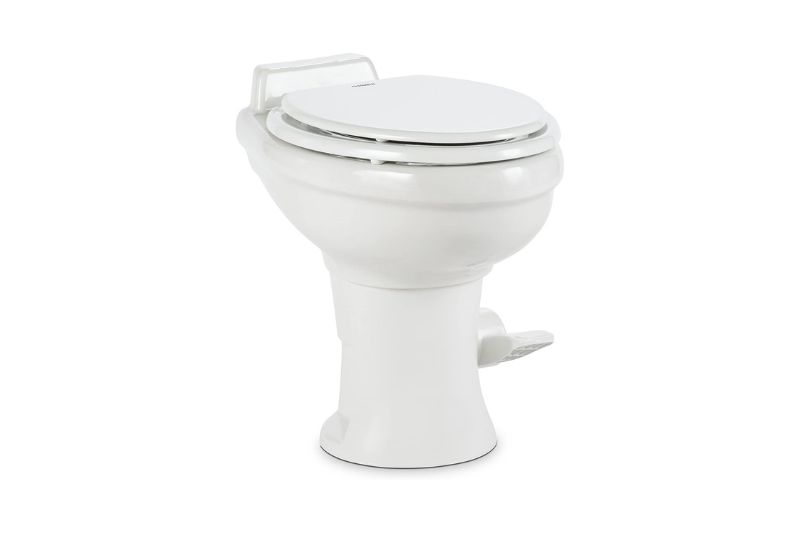We’re an affiliate
We hope you love the products featured in our articles. Just so you know, we may collect a share of sales or other compensation from the links on this page. Thank you if you use our links, we really appreciate it!
Are you looking to hit the road in an RV but have no idea how to get everything up and running? One very important component of any recreational vehicle is understanding how its toilets work.
In this article, we will look at exactly how RV toilets work and provide helpful maintenance tips for keeping them performing optimally throughout your escapades.
Toilet trouble can quickly ruin a trip, so it’s essential to understand the inner workings of your RV toilet before you set off on your great adventure.
How does an RV toilet work?
RV toilets are different from traditional residential toilets in several important ways.
First, RV toilets use a combination of water pressure, gravity and suction to flush out waste. The force of the water creates a vacuum that sucks out the contents and sends them through a standard three-inch sewer hose into the nearby sewage system.
Additionally, most RV toilets use a storage tank located beneath the toilet to collect waste. This tank must be emptied and cleaned out on a regular basis in order to keep your RV’s plumbing system functioning properly.
Types of RV toilets
There are several different types of RV toilets available on the market today. These include:
Gravity flush
This type of toilet uses a combination of gravity and water pressure to flush out waste. The tank is usually located beneath the toilet and must be emptied regularly.
Vacuum flush
A vacuum flush toilet uses suction instead of gravity to flush out waste. These toilets usually require less maintenance than gravity flush models and can be more expensive.
Composting
A composting toilet uses natural composting methods to break down waste into compost or fertilizer. It is a great choice for those looking for an eco-friendly option.
Common RV toilet problems
RV toilets are prone to clogging and other plumbing issues. Fortunately, there are a few simple things you can do to help keep your toilet running smoothly:
- Check the seals around the toilet for any leaks or damage.
- Make sure that the sewer hoses are in good condition and free of blockages.
- Empty the holding tank regularly and follow the manufacturer’s instructions for cleaning.
- Avoid using harsh chemicals or abrasives when cleaning your toilet, as these can damage it.
5 Tips for using your RV toilet correctly
Whether you’re a beginner or expert RVer, understanding how to use your RV toilet correctly can make or break your trip. We have 5 useful tips so that you can properly manage your RV toilet system and maximize your exploring.
- Always flush the toilet with a generous amount of water.
- Never put anything other than human waste and toilet paper in the toilet.
- Do not use too much toilet paper, as this can clog up the plumbing system.
- Empty the holding tank before it is full to reduce odors and prevent overflow.
- Always use the proper hose when connecting to a sewer system.
Final Thoughts
RV toilets are different from traditional residential toilets and require specific understanding of their inner workings in order to keep them running smoothly.
RV toilets use a combination of water pressure, gravity and suction to flush out waste as well as a storage tank located beneath the toilet that must be emptied on a regular basis.
There are several types of RV toilets available, such as gravity flush, vacuum flush and composting. To ensure proper functioning of your RV toilet system, it is important to check seals for leaks or damage, empty the holding tank regularly and avoid using harsh chemicals when cleaning.
By understanding how RV toilets work and following our simple maintenance tips, you can ensure that your trips are as hassle-free as possible.

















Related Articles
How To Fix A Low Water Level In Your Toilet Bowl?
How To Easily Remove A Bemis Toilet Seat?
Toilet Fills Up With Water Then Drains Slowly?